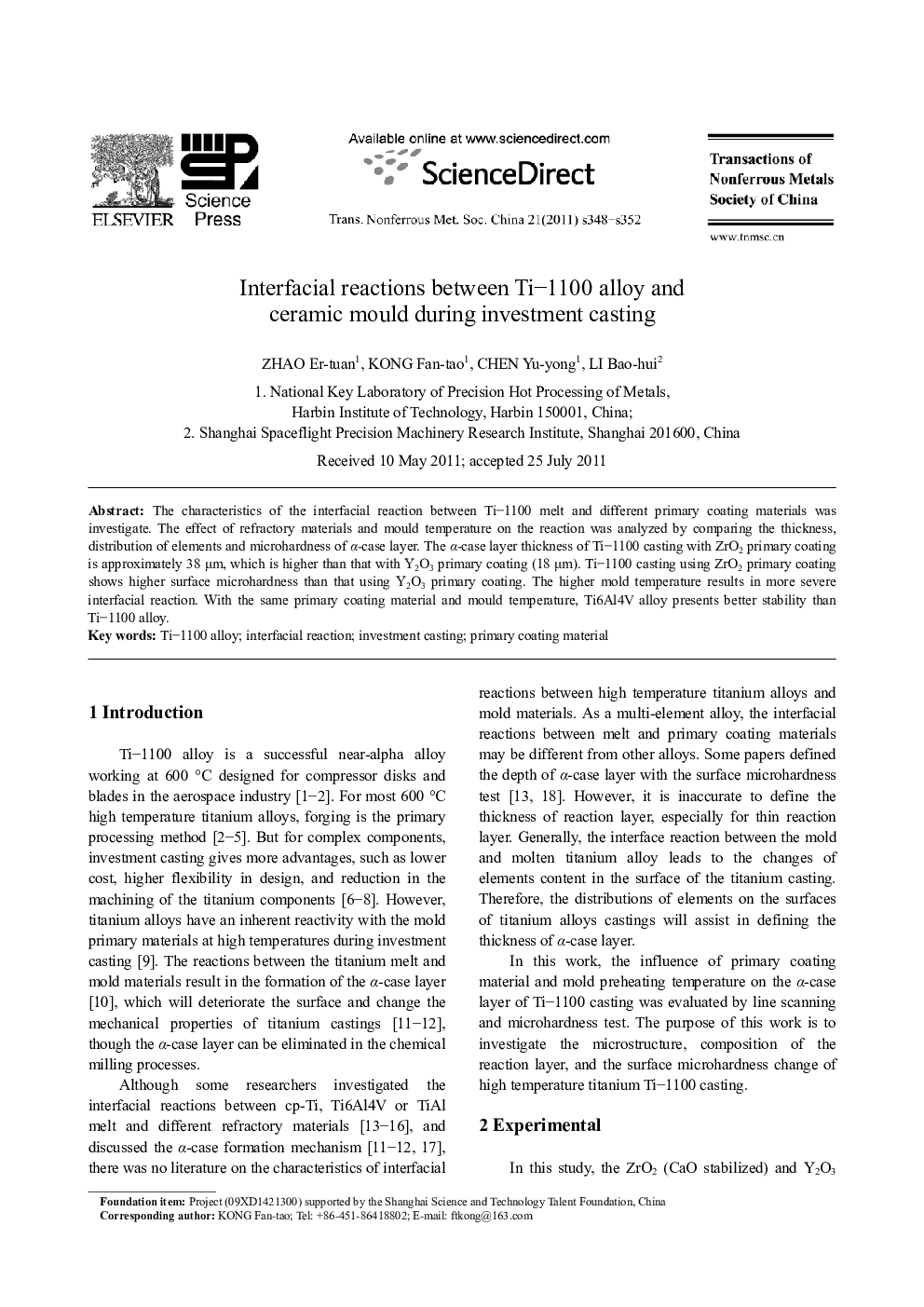| کد مقاله | کد نشریه | سال انتشار | مقاله انگلیسی | نسخه تمام متن |
|---|---|---|---|---|
| 1638661 | 1517015 | 2011 | 5 صفحه PDF | دانلود رایگان |

The characteristics of the interfacial reaction between Ti-1100 melt and different primary coating materials was investigate. The effect of refractory materials and mould temperature on the reaction was analyzed by comparing the thickness, distribution of elements and microhardness of α-case layer. The α-case layer thickness of Ti-1100 casting with ZrO2 primary coating is approximately 38 μm, which is higher than that with Y2O3 primary coating (18 μm). Ti-1100 casting using ZrO2 primary coating shows higher surface microhardness than that using Y2O3 primary coating. The higher mold temperature results in more severe interfacial reaction. With the same primary coating material and mould temperature, Ti6Al4V alloy presents better stability than Ti-1100 alloy.
Journal: Transactions of Nonferrous Metals Society of China - Volume 21, Supplement 2, August 2011, Pages s348-s352